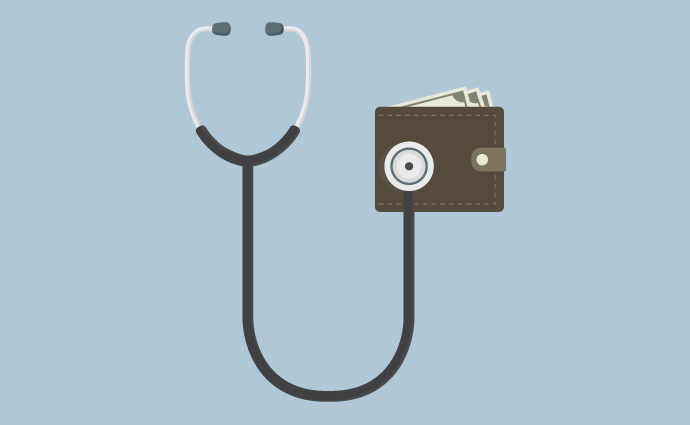Patient Financial Experience Improving, But More Work to Be Done
Leading health systems are prioritizing patient financial experience optimization, but the organizations are not quite consumer-centric just yet, a study finds.

Source: Thinkstock
- Even the country’s top health systems have room to improve the patient financial experience to boost revenue cycle performance, according to a new study by The Health Management Academy for Cedar.
The study, which examined patient billing practices at 20 of the top 100 US health systems, found that more than half of executives at leading health systems cite consumer-centrical financial experiences among their top priorities.
Additionally, 63 percent of the health systems have implemented strategies aligning with four or more components of the patient financial experience (i.e., price comparison shopping, scheduling and pre-registration, patient satisfaction).
However, 35 percent of the leading health systems, which included Partners HealthCare, Intermountain Health, NewYork-Presbyterian, and Memorial Hermann, do not offer a consolidated bill, and just 41 percent allow patients to select their won payment plans.
In addition, only some leading health systems track patient-centric metrics like patient satisfaction (67 percent), time to bill (58 percent), self-service (33 percent), and bill readability (25 percent). And less than half of the systems (41 percent) track more than two of the patient-centered metrics.
READ MORE: Key Ways to Boost Collection of Patient Financial Responsibility
“It's great to see that the top health systems are prioritizing the patient financial experience, but there is still much room for improvement. Approximately three in 10 Americans have experienced a healthcare bill go to collections, and if the top health systems are still facing challenges, then that indicates that the whole ecosystem has more work to do,” Florian Otto, co-founder and CEO of Cedar, stated in the announcement.
Optimizing patient billing to offer a seamless consumer experience is key in the current healthcare environment.
More healthcare consumers are expecting a personalized experience akin to what they experience with other industries (e.g. retail, banking). The popularity of high-deductible health plans also has patients shouldering more of the financial responsibility for care.
In fact, two-thirds of financial executives from the leading health systems anticipate the proportion of revenue coming from patients to increase by one to ten percent over the next five years, and a third expect the proportion to rise by over ten percent.
Together, the leading health systems have total operating revenues of $89 billion, which means the systems have a significant financial incentive to optimize the patient financial experience. And many are on their way to achieving that goal.
READ MORE: Patient Financial Experience the New Focus for Revenue Cycle Tech
The study found that the health systems are prioritizing patient financial experience components, such as price transparency, patient-centered medical billing, and flexible collection methods.
For example, 65 percent of the leading health systems have out-of-pocket price estimators for patients pre-care delivery, and 80 percent have implemented multiple communication methods to convey pricing and cost information to patients throughout the patient journey. Commonly used communication methods included having the patient bill available online (87 percent), publishing chargemaster prices on the system website (80 percent), mailing bills to patients (80 percent), in-person communication during registration (73 percent), and in-person communication after service (73 percent).
Three-quarters of the leading health systems also utilize two or more billing methods to connect with patients. While all financial executives said their system relies on paper billing, 83 percent said the organization has a patient portal that has patient billing capabilities. The systems also used – although less frequently than the patient portal – email statements, text messages, and vendor technology solutions, the study found.
In terms of payment options, 82 percent of leading health systems offered patients low or no interest payment plans.
While the leading health systems in the study have several strategies in place to optimize the patient financial experience, researchers pointed out that the organizations are largely implementing the initiatives in a piecemeal rather than systemic manner.
READ MORE: Pre-Access Center Collects More Patient Financial Responsibility
Greater alignment across functional areas is key to developing a system-wide strategy, they said.
Executives from the leading systems cited internal challenges as their top barrier to enhancing the patient financial experience. Overall, the C-suite identified competing priorities, a lack of patient engagement, and difficulties obtaining coverage information from payers as the major barriers.
But the degree to which each of these barriers impacted the patient financial experience strategy differed by position.
Finance and consumer executives had the most observable disconnect. Finance executives said competing priorities were the most common barrier to improving patient billing, while consumer executives (i.e., VP of Marketing, Chief Officer of Strategic Communication) found patient engagement to be the greatest obstacle.
Additionally, the barrier one group chose the most was the barrier the other group was least likely to choose, researchers pointed out.
“Overall, the US healthcare system still doesn't offer the same seamless experience that consumers have come to expect in other industries such as retail or banking. This study demonstrates that the recognition is present, but many challenges remain,” Otto concluded.
